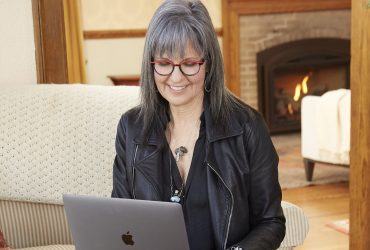How to make aging hurt less: X steps you can take right now
17.06.2021
Audio version
For your convenience here is the audio version of this article. Press Play to listen.

How can you reduce the risk of daily pain and soothe symptoms when it happens?
You’ve probably spent an hour or two slouching through episodes of The Crown on the sofa, more concerned with the actions of a young Queen Elizabeth II than your slouching posture. It’s likely you’ve bent over your phone at the kitchen table without acknowledging the slight hunch at the top of your spine and the squint in your eyes.
Like many midlifers, you may have checked out your paunch in the mirror when you got dressed this morning – but still went on to order greasy burgers before knocking back one too many glasses of pinot with your friends.
Despite your busy lifestyle, you’re still surprised that it takes longer to get out of bed and that your knees have started to give way while you’re gardening. You hear the Mission: Impossible theme start playing in your head whenever you reach down to tie your shoes or carry a box from the garage.
13 ways to safeguard yourself against pain as you age
Here’s a quick rundown of 13 ways to prevent and manage pain as you get older.
- Regularly practice any gentle exercise that keeps you mobile but takes pressure off your joints, like yoga, cycling, or even gardening.
- Drink water – often. Replace sugary drinks and alcohol with H2O.
- Try your best to lose some weight as you age, but don’t become underweight. You can achieve this by eating nutrient-dense foods and lots of fiber.
- When you exercise, be sure to complete your warm-ups and cooldowns.
- Your body knows best – listen to it.
- Make sure you’re covered by health insurance and can get aches and pains investigated by professionals.
- Stretch regularly.
- Make sure your vision prescription is up to date.
- Keep regular with all your checkups.
- Quit smoking.
- Get regular massages, acupuncture, or chiropractic manipulation when you experience aches.
- Make lifestyle adaptations, such as correcting your posture.
- Don’t just grimace through it – ask your family and friends for help
We go into the details and the science below. The one thing that never hurts is learning!
In some ways, pain can even be beneficial. It’s your body’s way of warning you that something serious is afoot so you can get it seen to. But constant pain is mentally and emotionally draining, and it can contribute to depression and isolation.
Help is at hand! Pain doesn’t have to define every waking hour. There’s a whole bunch of ways you can prevent and reduce the aches and pains that seem to echo through midlife. You have more control than you think, and you can start making changes today that can help you preserve the joy and motion in your life.
How to reduce pain as you get older
Not all pain is preventable, but you can take realistic steps to give your body the best chance at a happy life.
1. Get involved with gentle exercise.
You’ve got to look after your bones and joints. Advancing age is a risk factor for both osteoarthritis and osteoporosis.
Osteoarthritis is the most common type of arthritis and causes swollen, stiff, painful joints in the hips, knees, fingers, and feet. Osteoporosis causes bones to lose density over time, filling them with a grid of tiny holes that looks like honeycomb. This makes bones weaker and more likely to break.
Stiff joints hurt, and broken bones even more so. You want to keep your bones strong and your joints supple without putting too much pressure on either – and do so while you’re young enough to prevent both of the osteos.
These exercises are just some of the great options for building your strength in ways that are kind to your joints and bones.
- Walking
- Gardening (officially listed by the American Heart Association as exercise – and they know their stuff)
- Dancing (it’s fun, and you can do it around the home while no-one’s watching)
- Swimming (the water creates resistance while completely supporting your body)
- Cycling (a great cardio option for protecting your joints)
- Yoga (a superb, slow, and gentle way to stretch your joints while building strength, and great for relaxation)
- Tai chi (a martial art that keeps you active and flexible without getting you into fights)
- Pilates (great for both improving flexibility and building core strength to support your body while you carry your weight)
Aside from the direct benefits for your joints and bones, these exercises can help you manage and lose weight. If you’re keeping weight off, you’re also reducing the pressure on your joints. A great bonus!
2. H2Ouch, my back! The importance of water
Water is obviously important for, y’know, being alive all the time. But hydration is important for more than just keeping your pulse going.
Your joints are made of cartilage, which is about 65–80% water. The water content of cartilage drops over time. If you don’t regularly drink enough water, your joints don’t stay lubricated. And like poorly lubed brake pads, these wear down over time, contributing to the stiff, painful movements which led to you pulling out of your couples’ tennis match this afternoon (and losing the one before that).
If your cartilage lacks adequate water content. your poorly lubed joints will creak, click, and swell up. Especially after long periods of being sat down, you’ll start to feel sore when you stand up, climb the stairs, or try to exercise. They might feel stiff and difficult to move, or they may give you a grinding sensation, like your cartilage is made from sandpaper. No one wants to feel like that.
Make sure you’re drinking
- roughly 15.5 cups of water a day (for males)
- around 11.5 cups of water every day (for females)
3. Find a comfortable body weight.
People seem to focus on weight loss as a wellness goal. But your focus should really be on weight management, especially as the years pass.
Being overweight can put undue pressure on your knee joints (an extra 20–39 lbs of force on your knees – for every 10 extra lbs overweight you are – damn). Essentially, for each pound you put on, your knees take an extra 3 lbs worth of a beating every time you stand up.
However, being underweight means you might not have enough muscle to provide support for your body.
You have to strike a balance as you age.
General standout: What to eat as you get older
A pretty sure way of making sure you don’t put on too much weight (but don’t lose too much either) is through what you eat.
Diet isn’t just important for weight, though – it’s important for providing nutrients that fuel your brain, protect your heart, and keep your bones, gut, and organs strong.
These are the most important foods to include in your diet during midlife.
Nutrient-dense foods
Nutrient density refers to the amount of replenishing nutrients you get for each calorie the food adds to your intake. You need less calories as you age, so the more nutritional bang for your buck you can get, the better. The most nutrient-dense foods include:
- Fruit and veg
- Beans and lentils
- Nuts and seeds
- Whole grains
- Lean protein
- Low-fat dairy
The UK National Health Service have provided a handy calculator for working out your body mass index (BMI). It’s not a foolproof measure of whether you’re overweight or not (for example, you might have a good muscle-to-fat ratio, even though your body weight is technically high for your size and age). But BMI will help you work out the ideal range for your body weight.
Most adults should fall between a BMI of 18.5 and 24.9.
Fiber-rich foods
Fiber fills you up and reduces your urge to snack on sugar throughout the day. It also gives you a long, slow energy boost while keeping your poops regular as a bonus (or a brownus). It’ll also keep your gut healthy and your cholesterol levels in check.
Great sources of fiber include:
- Fruit
- Veg
- Beans
- Lentils
- Nuts
- Seed
- Oats
- Oat bran
- Whole grains
Healthy convenience foods
You should cook for yourself where possible, but you might not always have the time. Choose healthy alternatives to ready meals that still keep your cooking time to a minimum, including:
- Low-salt or frozen veg and soups
- Unsweetened or low-sugar fruit
- Bagged salad
- Coleslaw mix
- Precooked grilled turkey or rotisserie chicken
- Instant oatmeal
- Steamer bags of veg
Check the labels of all food you buy to make sure it’s low-sugar and low-salt, as well as packed with nutrients.
You might also want to take a nutritional supplement if your doctor advises it. Most older adults in the U.S. don’t absorb calcium, magnesium, or vitamins D and B12 particularly well, so supplements may help you top up. Ask your doctor to recommend a brand and tell you about any side effects.
4. Always warm up and cool down when you exercise.
Make sure you stretch before and after you work out (even when you’re about to do stretching-based exercise like yoga). You also need to warm up to and cool down from intense activity. Ease in and out. Not all of us can do what Keanu Reeves does at 56.
Not stretching, warming up, and cooling down can overload your joints and risk strains, sprains, and injury. Pulling a leg can cause pain at any age, but your recovery rate won’t be what it was.
Dynamic stretches, like walking lunges, are the best for warming up, as they focus on the same muscles you’ll use for exercise by mimicking the same movements. These types of stretches can also increase the flexibility of your muscles by improving blood flow.
5. Pay attention to your body.
Our generation is one that was taught to grin and bear it. But that gets worse for you as you reach your golden years – you might leave problems to get worse that could have been nipped in the bud during their early stages.
Often, it’s as simple as recognizing aches and pains. This applies both after exercise and during your day. If you really want to gain a deeper understanding of your own body and connect with it, body scan meditation can help.
People often use body scan meditation to soothe anxiety, but it allows you a dedicated moment to focus on each area of your body in turn. This may assist you in better understanding the character and precise location of your pain so you can inform your doctor. Or, it might simply help you process the pain better. Think of it as a mental X-ray.
You can lay on the floor and try body scanning right now. The steps are:
- Lay in a comfortable position.
- Close your eyes and focus on your breathing. Take note of how your breath feels when it leaves and enters your lungs as you breathe in and out.
- Choose a starting point. You can start anywhere – any of your hands or feet or the top of your head.
- Focus on the spot you chose and take deep, slow breaths. Breathe in for a count of 3, hold for 3, then out for 3 – or whatever feels good.
- Focus on any pain, stiffness, or uncomfortable sensations in that area. Note anything that feels different than how it normally feels.
- Spend time focusing on this area. Don’t try to fix these sensations or make them feel better – just observe them. It’s also important to acknowledge any frustrations that arise. Avoid getting angry at yourself for feeling these emotions. Acknowledge them and let them pass in their own time.
- Continue to breathe, and picture the discomfort reducing with each breath.
- Slowly stop focusing on that body part, releasing your attention. Move to the next part. Try ending your focus on the first part as you breathe out, and switch to the next as you breathe in.
- Repeat this process of focusing on one body part, really taking the time to feel out its abnormalities, and moving to another.
- If your thoughts drift as you body scan, don’t worry – let them drift, then gently return your attention to the body part upon which you were focusing.
- Once you’ve scanned as much of your body as you feel like scanning, let your awareness flood your whole body. Lay with this full-body awareness for a few moments.
- Release your focus, slowly, and start to take in your surroundings.
A study from 2017 found that mindfulness practices like body scanning can help reduce the impact of chronic pain on your well-being. It may not treat the pain, but it can reduce depression symptoms around the pain and improve your quality of life.
6. Make sure your health insurance or Medicare are set up and made to work for you.
Drinking water and exercise will only get you so far. If you don’t have comprehensive health coverage, you might find yourself ignoring nagging health problems for fear of emptying your pension pot into a doctor’s pocket.
Make sure you’re enrolled and have a plan that doesn’t hit you with overwhelming out-of-pocket costs. Your insurance provider may offer different policies for which you can pay higher premiums for lower excesses and copays. If you’re on Medicare, you can take out a supplemental policy called Medigap that covers out-of-pocket costs.
(Yes, we are living in a world where you can take out insurance on your insurance.)
Medicare also has a Part B that covers outpatient care like physiotherapy, which is a must for older adults who want to make sure they can receive treatment for joint and back pain.
7. Stretch often.
Stretching isn’t just for exercise. If you do some basic stretches every morning, it’ll reduce stiffness throughout the day and help you keep mobile. Also, it just feels pretty damn great.
You can try some basic yoga poses. Alternatively, give these stretches a go – they’ll give you that limber feeling at any age.
You can also check out this video on stretches you can try in the shower. The warm steam can help you get deeper into each stretch.
8. Keep getting regular eye tests.
It’s not just your joints and back that are going to be pain-prone as you age – you might get so used to squinting that you get headaches and eyestrain without realising it. That Kindle isn’t going to read itself!
Make sure you stay on top of optical health and that you visit an optometrist to change your prescription as your eyesight gets worse.
Also, make sure you take time away from close-up, focused activity if you spend all day staring at a screen for your work. For example, if you want to read a good yarn at the end of the day, why not go for an audiobook instead? Maybe instead of watching that Netflix show, listen to a good podcast instead.
9. Go to checkups.
As you age, your risk for both heart disease and cancer increases, so you should absolutely be undergoing regular checks for both. However, these appointments give you an opportunity to raise any less fatal aches and pains with your doctor. They could still be chipping away at your quality of life.
The physician might be able to refer you to physical therapy, make lifestyle recommendations, or prescribe painkillers.
10. Quit smoking.
This is an extremely important (but difficult) health choice you can make to reduce pain later on.
Smoking causes a whole host of health problems right the way across the body, but one of its effects is that it increases inflammation. This can slow down recovery and injury healing.
Plus, you can spend the money you save from not buying cigarettes on comfortable chairs and orthopedic shoes. (Smoking’s good? You stand corrected!)
General standout: Quick tips for quitting smoking
If you’re a smoker, quitting is one of the top things you should start doing for any aspect of your health.
As any ex-smoker will tell you, quitting is no picnic. But steps for quitting might include:
- Making a plan, including a set date to quit by
- Sticking to foods that supposedly make cigarettes taste terrible, like cheese, fruit, and veg (drinks-wise, choosing juice and water over soda, booze, or coffee can have a similar effect)
- Identifying your cravings and doing something else that distracts you for 5 minutes
- Exercising, which can reduce cravings
- Making friends who don’t smoke, which will help you avoid triggers
- Busying your hands and mouth, such as with nicotine replacement therapy, gum, or switching to a nicotine-free vape pen
- Reminding yourself why you quit (a picture of your family, for example, to remind you how important it is that you stay alive and mobile)
We believe in you!
11. Try alternative therapies.
If you aren’t a fan of medical clinics, you needn’t attend one. Plenty of lower-key, alternative therapies are available that can help keep pain at bay and restore a little of your quality of life.
- Acupuncture. This is an ancient Chinese remedy that involves the insertion of very thin needles into pressure points across the body. Science supports the effects of acupuncture on pain.
- Chiropractic manipulation. Cricks and pinches in your back can be incredibly uncomfortable and irritating. A chiropractor might be able to manipulate your spine and “crack” your back, releasing the tension.
- Podiatry. If your feet have bunions or corns, they can be painful. A podiatrist can help you manage these. They can give advice on footwear or orthotic insoles that might make putting weight on your feet much more comfortable.
- Massage therapists. They’re not just a luxury spa treatment. Massages can help you address knots and strains in your back. Make sure that your massage therapist is qualified to give therapeutic massages for pain relief. A casual massage can feel great, but it takes a certified therapist to administer a massage as a treatment for pain.
12. Make lifestyle adjustments.
Doctors needn’t always get involved (although, often, they should). There are steps you can take in everyday life to mediate your pain, as long as you listen to your body and follow your instinct.
Maintaining correct posture is one of the simplest and most effective adjustments you can make. To keep your posture on point while sitting down to either take in a Netflix series or work at your computer:
- Keep your feet flat, resting them on the floor or either side of a footrest.
- Don’t cross your knees and ankles.
- Keep a small gap between the chair and the backs of your knees.
- Make sure your knees are level with your hips or slightly lower.
- Keep your knees behind your ankles.
- Relax your shoulders.
- It’s best to keep your knees and forearms in line with the floor.
- Keep your back straight.
- Avoid straining your neck by looking forward when you can.
- Keep your elbows by your side, creating something of an L-shape with your arms.
- Make sure your back meets the back of the chair and is supported. Use a backrest or cushion to fill the gap if the chair doesn’t make contact with your back. This is especially important for the lower back.
- Take a 10-minute break for every hour you’re sat down.
Even something as simple as back supports for chairs and insoles for shoes can mean you experience less wear-and-tear on your body.
When you’re using your mobile phone, pick it up instead of leaning into it. We can sometimes get so absorbed in our screens we forget that we’re sitting on a chair and slouching forward. Try to lean back in your chair and maintain a straight back, holding your phone up to eye level instead of bowing your head to it.
Make sure you avoid using it directly in front of your face and you’re keeping your phone a distance away that doesn’t cause eye strain. If you’re struggling to read the letter, go into the settings menu and increase the font size rather than blinding yourself with the backlight of the screen.
13. Ask for help from loved ones.
You’re not a superhero. You have to know your limits.
If you need help moving that table or lifting that box, then ask for help from a family member or friend. Folks who live alone can call on a neighbor. There’s no need to give yourself a strain or sprain, and you’re not proving anything to anyone by doing so.
You should also lean on them for emotional support. Pain sucks, and if a different part of your body hurts every day, it can make you miserable. Make sure you don’t bottle up your feelings when it comes to how your body feels. They may have suggestions that can help, or might just offer empathy and good cheer.
It all helps.
Roundup
Now you see why there’s hope. Your body won’t ever be what it was 20 years ago. But if you listen to its signs, eat a balanced diet, stretch often, and make small adjustments to your lifestyle, it can make a world of difference to your quality of life.
Sometimes, you won’t be able to prevent conditions like osteoarthritis. It’s basically just wear and tear. But if you do get it, you can make sure it doesn’t develop quickly, and you can make symptoms more comfortable and less severe.
Look after yourself – you’re not the Bionic Man or Woman. You only get one body. But if you do right by the body you get, it’ll do right by you, keeping you active well into the future.
Article resources
5 best ways to safeguard your joints as you age. (2020). https://health.clevelandclinic.org/5-best-ways-to-safeguard-your-joints-as-you-age/
10 ways to reduce pain. (2020). https://www.nhs.uk/live-well/healthy-body/10-ways-to-ease-pain/
13 ways to fix your age related back pain. (2017). https://health.clevelandclinic.org/back-pain-your-spine-and-father-time/
Age and cancer risk. (2021). https://www.cancer.gov/about-cancer/causes-prevention/risk/age
American Heart Association recommendations for physical activity in adults and kids. (2018). https://www.heart.org/en/healthy-living/fitness/fitness-basics/aha-recs-for-physical-activity-in-adults
Ball, E. F., et al. (2017). Does mindfulness meditation improve chronic pain? A systematic review. https://pubmed.ncbi.nlm.nih.gov/28961631/
Dehydration and joint pain: How your hydration is affecting joint health. (2020). https://orthopedicassociates.org/dehydration-and-joint-pain-how-your-hydration-is-affecting-joint-health/
Exercise and physical activity. (n.d.). https://www.nia.nih.gov/health/exercise-physical-activity
Heart health and aging. (2018). https://www.nia.nih.gov/health/heart-health-and-aging
Holland, K. (2021). Understanding cartilage, joints, and the aging process. https://www.healthline.com/health/osteoarthritis/understanding-aging-and-joints
How to quit smoking. (2020). https://www.helpguide.org/articles/addictions/how-to-quit-smoking.htm
Huizen, J. (2018). Sitting positions for good posture. https://www.medicalnewstoday.com/articles/321863
Nutrition and healthy eating. (2020). https://www.mayoclinic.org/healthy-lifestyle/nutrition-and-healthy-eating/in-depth/water/art-20044256#:~:text=So%20how%20much%20fluid%20does,fluids%20a%20day%20for%20women
Osteoarthritis. (n.d.). https://www.arthritis.org/diseases/osteoarthritis
Pain in older people. (2008). https://www.britishpainsociety.org/static/uploads/resources/files/book_pain_in_older_age_ID7826.pdf















